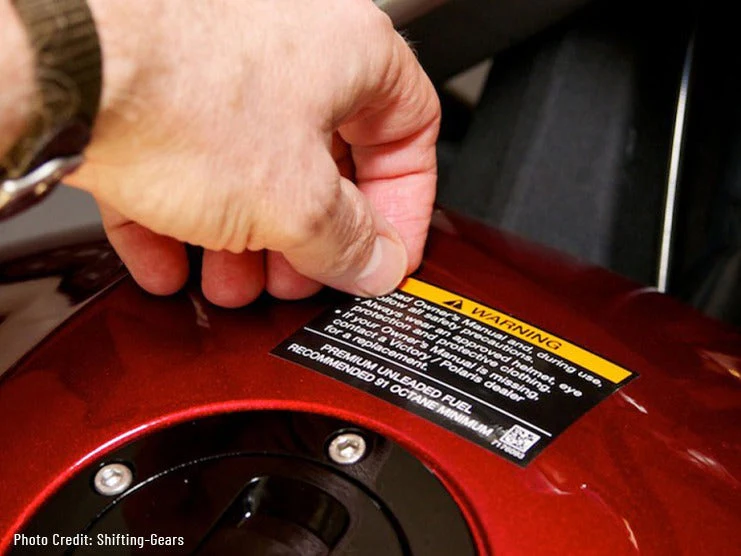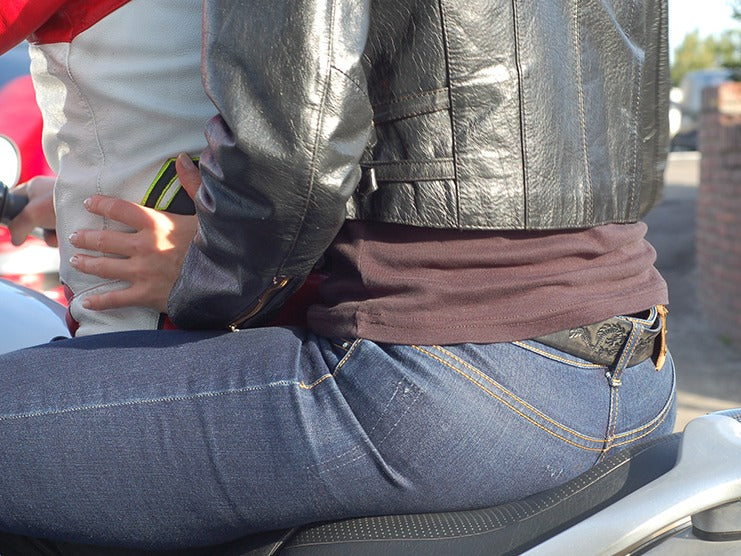Table of Content
If you are a motorcycle enthusiast, own a motorcycle license, and took a motorcycle safety course, you are likely familiar with all the road safety guidelines. To remind you to wear a helmet and safety riding gear before going on a motorcycle ride, and never ride a motorcycle under the influence, motorcycle manufacturers put warning labels on different parts. The stickers with the basic safety riding tips are mostly pasted on the fuel tanks. If you have difficulty remembering the riding safety tips, it is recommended you keep the sticker. However, if you are a responsible rider, you can remove the stickers to improve the motorcycle’s look. Read this article to learn how to safely remove stickers from a motorcycle without damaging the paint.
Also Read: TIPS TO REMOVE MOTORCYCLE SCRATCHES
1. How to Safely Remove Stickers from Motorcycles

The factory warning stickers on your motorcycle are pasted using strong adhesives. If you try to remove them the wrong way, they can peel off the motorcycle paint or leave a mark. To avoid this, make sure you follow the right procedure.
1.1 Equipment Required to Remove Stickers/Decals from Motorcycles
- Hair dryer/Heat gun
- Microfiber cloth
- WD-40/ Goo Gone
1.2 Procedure
- Start heating the sticker by using a hair dryer or a heat gun. Because most people are accustomed to using a hair dryer due to being a common household item, it is recommended you use a hair dryer.
- Make sure not to heat the sticker at close range as it can damage the paint. Try to maintain a distance of around seven to eight inches. Also, do not heat the stickers too much as it can cause the paint to melt.
- When the sticker is warm, start to remove it from a corner. Warning stickers on motorcycles are usually rectangular in shape.
- Make sure to start peeling the sticker off from the thinner side at 90° to avoid tearing the sticker. If done correctly, the sticker will come off cleanly without leaving any adhesive. However, if there is still some adhesive left on the paint, use an adhesive-removing solvent like WD-40 or Goo Gone.
- Take a piece of clean microfiber cloth and spray some solvent on it. Now gently rub the adhesive left on the motorcycle paint to wipe it off. Make sure not to rub the cloth harshly as it can scratch the motorcycle part.
2. Recap
- Heat the sticker using a hair dryer or heat gun
- Maintain a safe distance of around seven to eight inches
- Start peeling the sticker off from the thinner side at 90°
- Take a piece of clean microfiber cloth
- Spray some adhesive-removing solvent on the microfiber cloth
- Gently rub the area with the cloth to remove any leftover adhesive
3. Note

Some important stickers on your motorcycle must not be removed. Examples are the sticker with the Vehicle Identification Number (VIN) on it and the emission-compliant sticker. These stickers are not easily visible as motorcycle manufacturers typically put them on the frame or fairing. Another sticker is on the swing arm or rear fender with useful information, including the nominal tire pressure and chain slack.
Also Read: BEST PAINTS FOR CUSTOM MOTORCYCLE FAIRINGS
4. Final Words
To remind you of safety tips and warnings, factory warning stickers are pasted on several motorcycle parts. The basic safety guidelines mentioned on these stickers include wearing a helmet and safety gear and not riding while under the influence. Removing these stickers can improve your motorcycle’s look.
However, make sure to remove them with care if you do not want to ruin the motorcycle’s paint job. You can easily remove the stickers by following the procedure covered in this article.
If you want to improve the aesthetics, comfort, and safety of your motorcycle, Viking Bags offers several aftermarket parts, including sissy bars, fairings, crash bars, handlebars, seats, and backrests. Viking Bags also has several luggage options to increase your motorcycle’s storage capacity, including saddlebags, sissy bar bags, handlebar bags, and tank bags.












Leave a comment
All comments are moderated before being published.
This site is protected by hCaptcha and the hCaptcha Privacy Policy and Terms of Service apply.